by Dr Ruth Salter
There are many indulgent foods that are synonymous with Christmas today, but two of the key ones must surely be chocolate and alcohol. True, the turkey and its trimmings are Christmas classics, but it’s those festive extras – the champagne at breakfast, and the mid-morning opening of the chocolate selection box… all of which will have disappeared by mid-afternoon (bar that one flavour nobody likes!) – that add to the luxury of these seasonal festivities. However, this love of chocolate is nothing new. In fact, it dates back to the late-seventeenth and early-eighteenth centuries. But this was a period when chocolate was drank rather than nibbled.
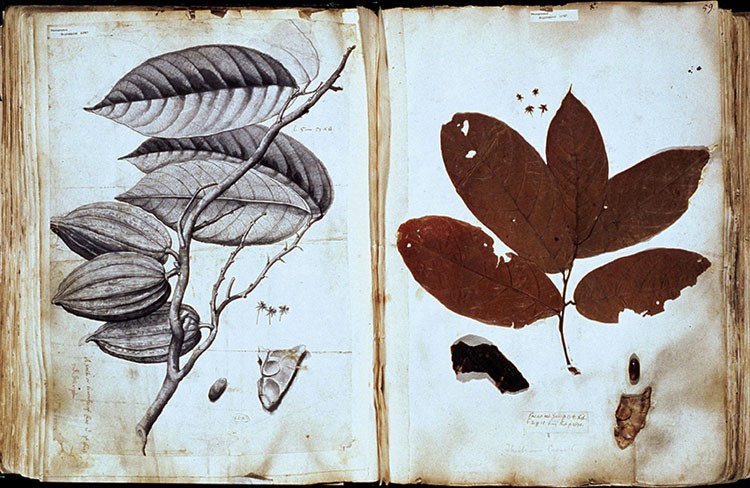
- Sir Hans Sloane’s cacao specimen collected from Jamaica; Natural History Museum, London
By the seventeenth century exploration and colonisation in the New World was thriving, and the ability to access new luxury goods was a sign of status. So important was the visual representation of status that, in 1689, when William of Orange and Mary Stuart ascended the throne they wished to have the most up-to-date and fashionable residences they could – one which would reflect the wealth of the nation. They looked to Hampton Court Palace, which was still a (now slightly tired and unfashionable looking) Tudor palace, and decided it needed a facelift. This upgrade transformed the eastern and southern facades of Hampton Court; replacing out-dated Tudor towers and chimneys with an elegant, and extravagant, baroque design which overlooked the Formal Gardens.

- Hampton Court Palace from the south
Importantly, three new kitchens were also added to the Palace: a confectionary kitchen; a spice kitchen; and a chocolate kitchen. These were built close to the entrance to the new wing, and the rich aromas from the kitchens would greet visitors on their arrival at court. The smell of these expensive, high-status, luxury ingredients helped to set expectations for the experience of a visit to Hampton Court.
Unfortunately, neither Mary (d.1694) nor William (d.1702) lived to enjoy this new palace themselves. But the new Hampton Court, and its chocolate kitchen, were enjoyed by Queen Anne (d.1714) and then George I (d.1727). In fact, the first Georgian monarch was so keen on this fashionable sweet treat that he hired one of London’s top chocolatiers, Thomas Tosier, to be his personal chocolate chef in 1717. Tosier wasevidently so good that he was later retained by George II.
The process of making drinking chocolate in the early-eighteenth century was a laborious one. It began with the grinding down the chocolate nibs into a smooth paste but, as you can see in Historic Royal Palaces’ video on YouTube, this was only the beginning. As a result, skilled chocolate makers, such as Tosier, were in high demand and were highly regarded, and not just at the royal palaces.
Prior to working for George I, Tosier had established ‘The Chocolate House’ on Chocolate Row (now West Grove), Greenwich, London. This was very popular with fashionable London society, and the area was known as ‘Chocolate Row’ from the beginning of the eighteenth century, because it was one of the first places in London to serve chocolate.
These ‘chocolate houses’ were high-class establishments, frequented only by the wealthy who could afford to drink (and indulge in!) chocolate. This set the chocolate house apart from the other famous ‘house’ of the era, the ‘coffee house’, which had a more popular following. Therefore, ‘chocolate houses’ were almost akin to exclusive clubs, and to frequent one was a sign of prestige.
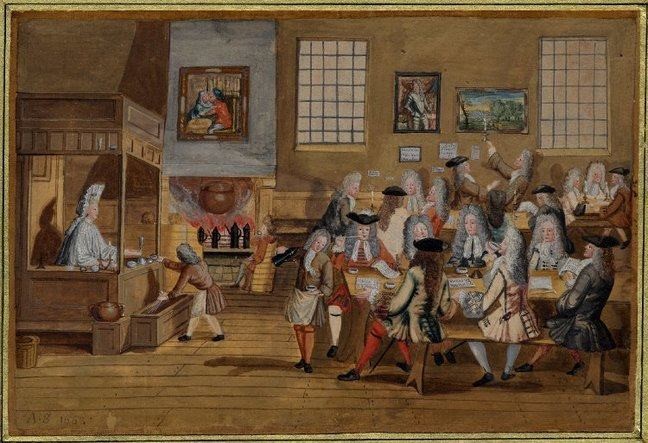
Drawing of a Chocolate House (Anonymous, 1690-1700), British Museum
However, as European society began to warm to the tastes of these new, exotic beverages, there was a growing concern that these new sweet treats could be abused. Why? Because while there had been developments in medicine, particularly in terms of anatomical understandings, by the eighteenth century, humoral theory remained a valued part of medicinal practice. Humoral theory, at its most basic level, was the understanding that the four humours (blood, yellow bile, black bile and phlegm) needed to be in balance in order for the body to be healthy. A lack or an excess of any of the humours would cause the body to be out of balance, thus resulting in ill-health. Every plant was seen to contain certain humoral qualities.
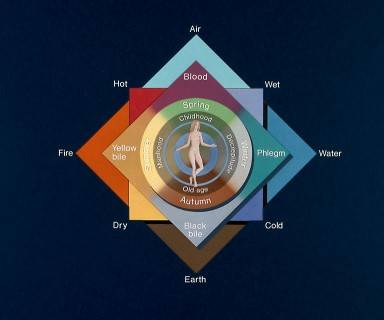
The Four Humours (and their related attributes), ‘Brought to Life’, The Science Museum
In his 1631 work Curioso Tratado de la Naturaleza y Calidad del Chocolate, Spanish priest and physician Antonio Colmenero de Ledesma, had written about the properties of cacao. Depending on how chocolate was administered, he stated, the curative result would alter, either heating or cooling the patient; two extremes then in terms of humoral theory.
Therefore, while the mid-1600s had been a period in which chocolate was perceived almost solely as a medicinal drug, by the 1700s chocolate was being marketed as exotic and fashionable; and its image was shifting from its medicinal benefits towards an idea of high-status luxury. Thus for the early Georgians chocolate was not just an indulgent treat but could also be beneficial to health… in small quantities. So, in response to concerns over abusive practice, physicians published treatises on the benefits of drinking chocolate, such as the one below.
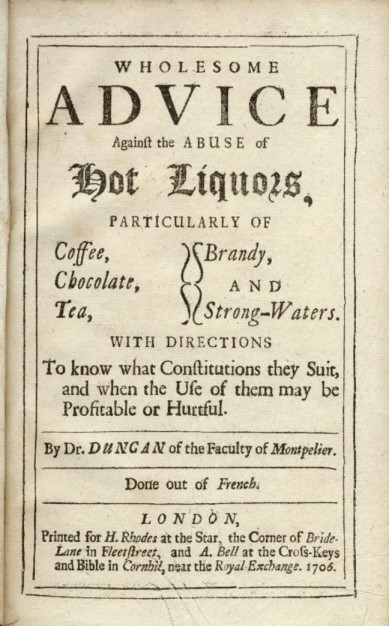
Title page from Dr Duncan’s Wholesome Advice Against the Abuse of Hot Liquors (1706)
But what, I hear you ask, does any of this have to do with Christmas? Well, for one, Christmas in this period had begun to look more like the festivity we recognise today. The Interregnum (1649-60) had a lasting impact on the festive celebrations. After this the Twelve Days of Christmas were never again treated with the same importance they had been in the medieval or Tudor periods. While in the early-eighteenth century the whole Christmas period continued to be celebrated, the festivities broadened and we begin to see the loss of the religious monopoly on celebrations, with some shops opening on Christmas Day, and some churchmen even complaining of empty churches on December 25th as people stayed away to see family and friends!
Certain foods were also now traditionally linked to Christmas celebrations as we can see from Caroline of Ansbach’s (wife of George II) Christmas Day menu which can still be seen at Kensington Palace. Both turkey and mince pies are among the foods listed on this menu from 1736.
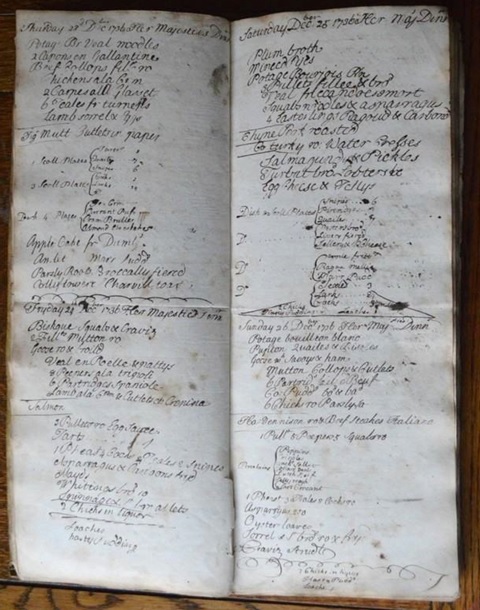
Queen Caroline’s Christmas menu (1736), Kensington Palace
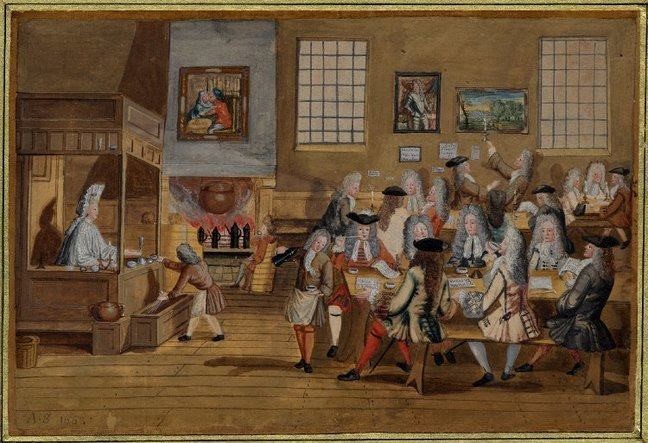
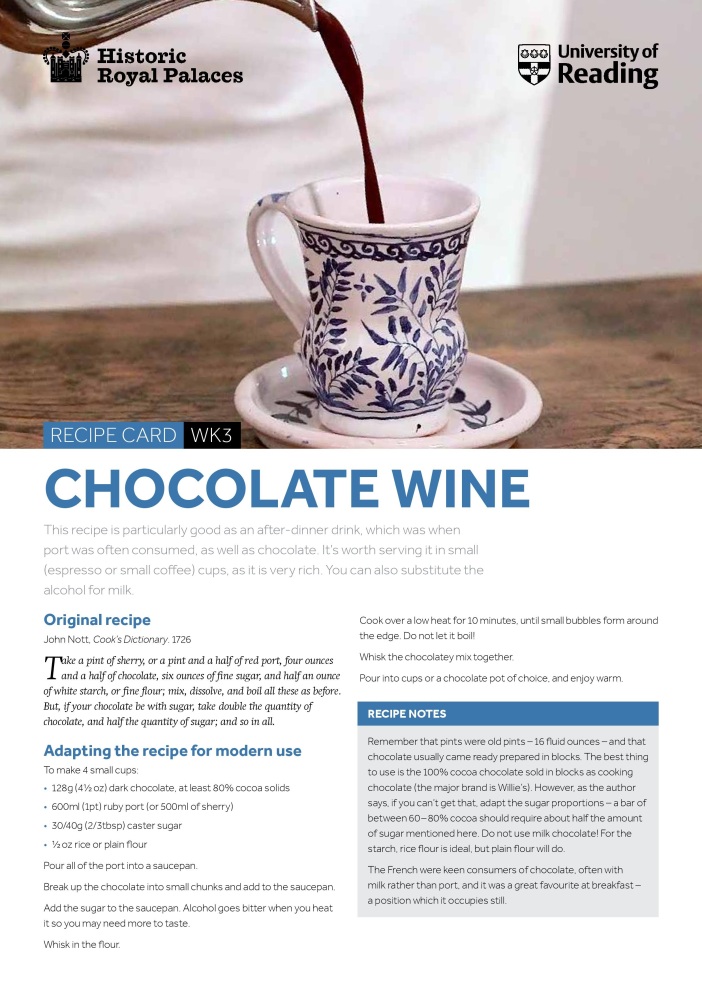
Leave a comment